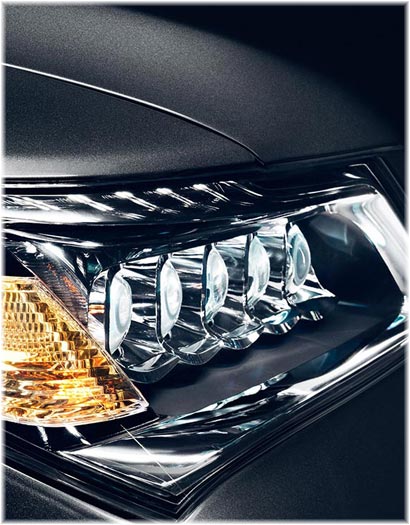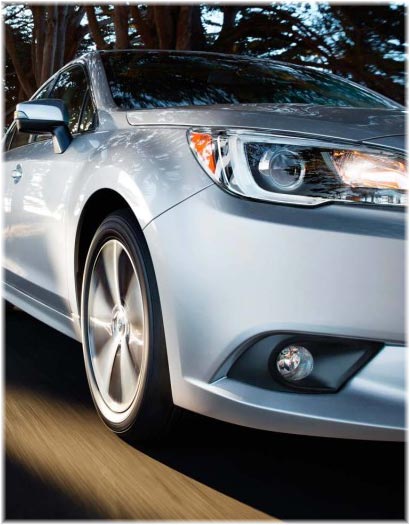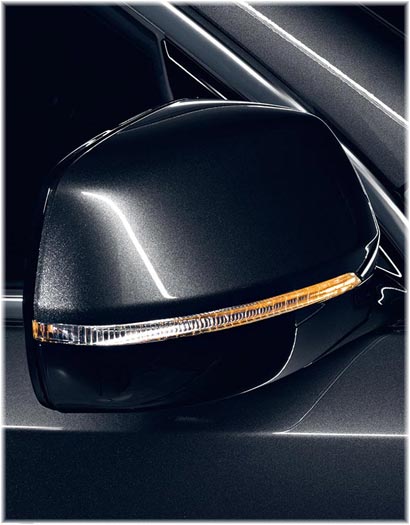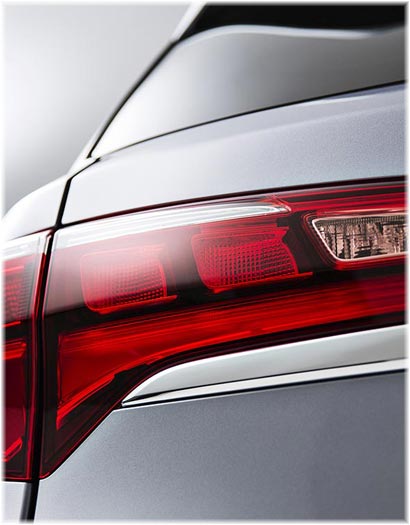North American Lighting is the leading tier one supplier of vehicle lighting to auto makers in the United States, Canada and Mexico. NAL produces a full range of products including forward lighting, signal lighting, rear combination lighting, accessory lighting, and our upcoming all-digital adaptive driving beam lighting systems.
Technology
 With 80 years of automotive lighting experience behind us, our research and development teams in Japan and Michigan are redefining automotive lighting for the 21st century. Today, we are transforming traditional manually-controlled static headlights, with next-generation ADB (adaptive driving beam) technology—dynamic lighting systems that will see, sense, adapt and react to rapidly changing driving conditions.
With 80 years of automotive lighting experience behind us, our research and development teams in Japan and Michigan are redefining automotive lighting for the 21st century. Today, we are transforming traditional manually-controlled static headlights, with next-generation ADB (adaptive driving beam) technology—dynamic lighting systems that will see, sense, adapt and react to rapidly changing driving conditions.Design
 Over the years, we’ve systematically transformed standard, round, one-size-fits-all headlamp components into stylish, integrated lighting systems specially designed for each auto brand and vehicle model. Our technologies enhance vehicle styling and performance, while also being highly energy efficient and eco-friendly. Whatever the auto stylist’s vision—from striking jewel-like, multi-projector arrays, to brilliant 3D optical rear combination lamps—NAL’s stylists and design engineers are creating the signature looks today’s auto brands require.
Over the years, we’ve systematically transformed standard, round, one-size-fits-all headlamp components into stylish, integrated lighting systems specially designed for each auto brand and vehicle model. Our technologies enhance vehicle styling and performance, while also being highly energy efficient and eco-friendly. Whatever the auto stylist’s vision—from striking jewel-like, multi-projector arrays, to brilliant 3D optical rear combination lamps—NAL’s stylists and design engineers are creating the signature looks today’s auto brands require.
Engineering
 The challenge of great product design is manufacturability. That’s where NAL’s product engineers come in. Bridging the gap between design concepts and manufacturing, they integrate state-of-the-art lamp, lens and control technologies into exotic, sculptural designs that can be mass produced to exacting standards. Beyond optical calibration and manufacturability, we also focus on improving vehicle aerodynamics, reducing electrical system draw, increasing fuel efficiency, and establishing strict lamp uniformity and reliability.
The challenge of great product design is manufacturability. That’s where NAL’s product engineers come in. Bridging the gap between design concepts and manufacturing, they integrate state-of-the-art lamp, lens and control technologies into exotic, sculptural designs that can be mass produced to exacting standards. Beyond optical calibration and manufacturability, we also focus on improving vehicle aerodynamics, reducing electrical system draw, increasing fuel efficiency, and establishing strict lamp uniformity and reliability.
Manufacturing
 NAL is a leading proponent of the kanban pull system of lean manufacturing—incorporating the Koito Production System, just-in-time manufacturing, and total quality management for workflow and materials production. Combined, these processes allow us to improve quality, control inventory, avoid part obsolescence, minimize waste, reduce product costs and maintain production flexibility. With our aggressive rollout of advanced LED lighting systems, NAL is leading a digital lighting revolution that’s sweeping through the auto industry.
NAL is a leading proponent of the kanban pull system of lean manufacturing—incorporating the Koito Production System, just-in-time manufacturing, and total quality management for workflow and materials production. Combined, these processes allow us to improve quality, control inventory, avoid part obsolescence, minimize waste, reduce product costs and maintain production flexibility. With our aggressive rollout of advanced LED lighting systems, NAL is leading a digital lighting revolution that’s sweeping through the auto industry.
To learn more about NAL’s technical innovations, see our automotive lighting firsts.
The lighting systems on today’s vehicles have evolved from being necessary safety features into being distinctive design statements that create brand personality and intrigue.
Ramon Gomez
Senior Stylist, Technology Research Center
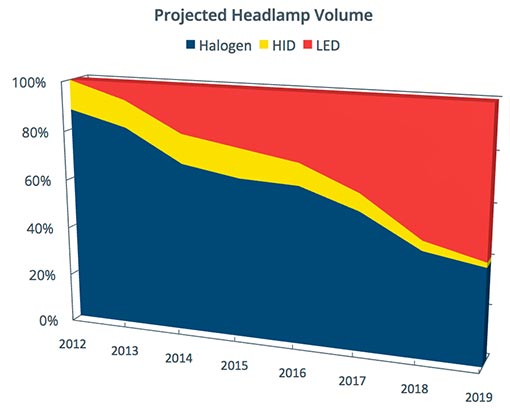 Rapid Advances in Lighting Technology
Rapid Advances in Lighting Technology
NAL is a leader in emerging lighting technologies. While we have the largest number of HID headlamps in the field today, traditional halogen lamps remain the dominant lighting technology. In 2012, we produced zero LED lamps. Yet less than four years later, 2016 LED production is projected to rise to 27%. That’s unprecedented growth, especially for the automotive industry. And with conservative estimates projecting our LED sales to surpass 50% in 2018, NAL is in the fast lane to an LED-lit future.
Halogen Headlamps
 In 1978, halogen bulbs (which for the times had high luminous intensity and excellent glare-proofing properties) were approved and standardized for automotive use in the United States. That year, Koito began producing industry-standard, round sealed-beam and semi-sealed-beam headlamps for the rapidly growing United States market.
In 1978, halogen bulbs (which for the times had high luminous intensity and excellent glare-proofing properties) were approved and standardized for automotive use in the United States. That year, Koito began producing industry-standard, round sealed-beam and semi-sealed-beam headlamps for the rapidly growing United States market.
Soon after, in 1979, Koito introduced what was then a radically new concept—uniquely shaped headlamps, engineered specifically to fit individual vehicle designs. These new lighting designs were so popular with automotive stylists and consumers alike, Koito began production and sales of an all new, C-6 halogen bulb in 1982. In 1983, Koito launched North American Lighting as their first United States subsidiary.
High-Intensity Discharge Lamps
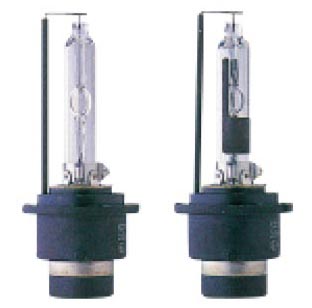 In 2003, Koito’s research and development team successfully designed their proprietary HID (high-intensity discharge) xenon bulb and ballast system, becoming the first tier one automotive lighting supplier with in-house production of HID bulbs, ballasts, lenses, reflectors and custom lamp housings.
In 2003, Koito’s research and development team successfully designed their proprietary HID (high-intensity discharge) xenon bulb and ballast system, becoming the first tier one automotive lighting supplier with in-house production of HID bulbs, ballasts, lenses, reflectors and custom lamp housings.
Producing three times the brightness, and having twice the life span of competing lamps, demand for our HID lighting systems soared. Working with Koito, NAL quickly ramped up HID production to meet the increasing demand from automakers in the United States and Canada.
Mercury-Free HID
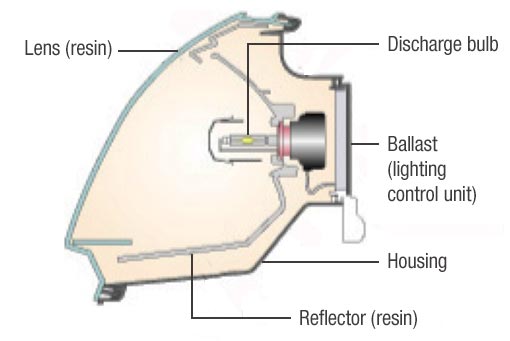 The original HID bulbs included trace amounts of mercury. In 2004, Koito, NAL and other industry partners jointly developed the world’s first mercury-free HID bulb, along with a new, super-small, energy-efficient lighting control ballast.
The original HID bulbs included trace amounts of mercury. In 2004, Koito, NAL and other industry partners jointly developed the world’s first mercury-free HID bulb, along with a new, super-small, energy-efficient lighting control ballast.
These compact high-efficiency HID lamps easily matched the performance of the original, larger HIDs, while being more economical and environmentally-friendly. Aesthetically, their small form factor, high efficiency and jewel-like radiance launched a new era of bold automotive styling and brilliant lighting design.
LED
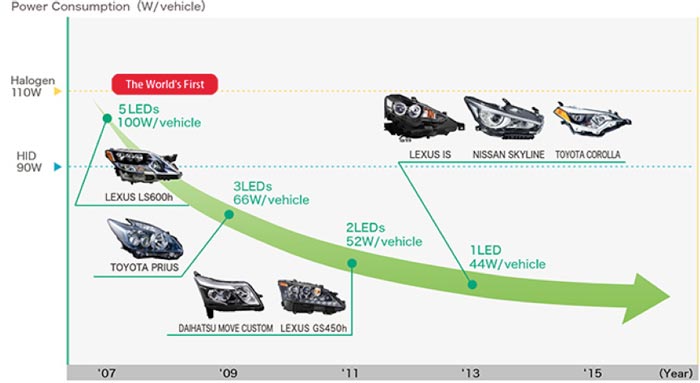 Brighter, whiter and longer lasting than traditional halogen and HID headlights, LEDs cast a long, wide beam of bright, focused light on the road ahead. The latest LED lighting systems are suitable for every driving condition, making nighttime driving safer and more comfortable.
Brighter, whiter and longer lasting than traditional halogen and HID headlights, LEDs cast a long, wide beam of bright, focused light on the road ahead. The latest LED lighting systems are suitable for every driving condition, making nighttime driving safer and more comfortable.
This graph shows the rapid advancements in LED lighting performance. By refining the optical properties of lenses and reflectors, and enhancing the performance of digital controllers, the number of required LEDs has been reduced from five separate LED units, down to a single LED unit.
Koito debuted the industry’s first production LED headlamp in 2007, as a high-end option on the Lexus LS 600h hybrid luxury sedan. Today, LED headlamps are standard equipment on every 2016 Toyota Corolla. Given this pace of innovation, it’s clear to see why LEDs from North American Lighting are the eco-friendly choice for high-performance, high-style automotive lighting systems.
Adaptive Driving Beam
 Upcoming ADB headlamp systems will improve drivers’ forward and side vision, while reducing glare for other motorists and pedestrians. Next-generation ADB systems will soon enhance the night driving experience by using integrated cameras and sensors to detect vehicles, pedestrians and even wildlife ahead and on the roadside. Intelligent ADB lighting systems can control each LED unit independently. They increase light output for wide-field illumination when the road ahead is clear, then automatically dim, split between high beams and low beams, and can even deactivate individual LEDs when they sense approaching, intersecting or merging traffic. Already approved and available in Europe, Australia and other countries, in October 2018, the U.S. National Highway Traffic Safety Administration (NHTSA) said it was moving forward to allow Adaptive Driving Beam technology in vehicles on U.S. roads.
Upcoming ADB headlamp systems will improve drivers’ forward and side vision, while reducing glare for other motorists and pedestrians. Next-generation ADB systems will soon enhance the night driving experience by using integrated cameras and sensors to detect vehicles, pedestrians and even wildlife ahead and on the roadside. Intelligent ADB lighting systems can control each LED unit independently. They increase light output for wide-field illumination when the road ahead is clear, then automatically dim, split between high beams and low beams, and can even deactivate individual LEDs when they sense approaching, intersecting or merging traffic. Already approved and available in Europe, Australia and other countries, in October 2018, the U.S. National Highway Traffic Safety Administration (NHTSA) said it was moving forward to allow Adaptive Driving Beam technology in vehicles on U.S. roads.
Intelligent Adaptive Driving Beams—now everyone can see, and be seen.
Organic LED
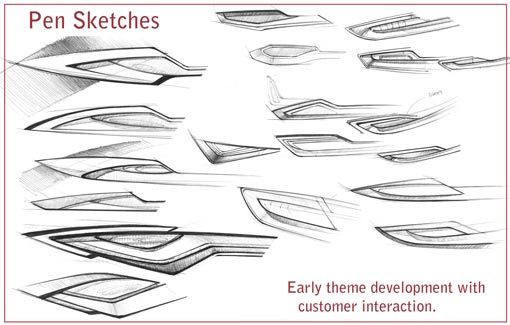 OLED (organic LED) is an emerging thin-film screen technology being introduced for ultra-thin televisions, computer monitors and high-end smartphones.
OLED (organic LED) is an emerging thin-film screen technology being introduced for ultra-thin televisions, computer monitors and high-end smartphones.
OLEDs are unique because they can be formed into ultra-light, super-thin flexible films that emit light. They can be shaped and contoured to fit curved surfaces, and are completely transparent when turned off. While OLEDs for automotive applications are in the early stages of research and development, they offer intriguing design possibilities as signal lamps, novel accessory lights, and even as illuminated badging and branding.
Laser Headlights
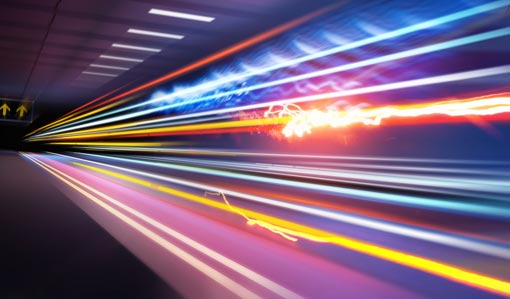 As leading innovators in automotive lighting technology, Koito and NAL’s research and development teams are looking ahead to next-generation products. While still in development, LASER (Light Amplification by Stimulated Emission of Radiation) lamps are expected to surpass LEDs as next-generation light sources. Laser’s advantage is a high-luminance beam that can focus tightly over very long distances, and may offer enhanced visual acuity, augmented driving cues, and instantaneous adaptive dimming. Of course for now, such speculation is the stuff of science fiction. Or is it?
As leading innovators in automotive lighting technology, Koito and NAL’s research and development teams are looking ahead to next-generation products. While still in development, LASER (Light Amplification by Stimulated Emission of Radiation) lamps are expected to surpass LEDs as next-generation light sources. Laser’s advantage is a high-luminance beam that can focus tightly over very long distances, and may offer enhanced visual acuity, augmented driving cues, and instantaneous adaptive dimming. Of course for now, such speculation is the stuff of science fiction. Or is it?

Lexus images courtesy of, and copyright by, ©Lexus, a Division of Toyota Motor Sales, U.S.A., Inc.

Acura images courtesy of, and copyright by, ©Acura.

Subaru images courtesy of, and copyright by, ©Subaru of America, Inc.

Lincoln and Mustang images courtesy of, and copyright by, ©Ford Motor Company.
Where Innovation & Technology Come To Light.
See What's Ahead.

